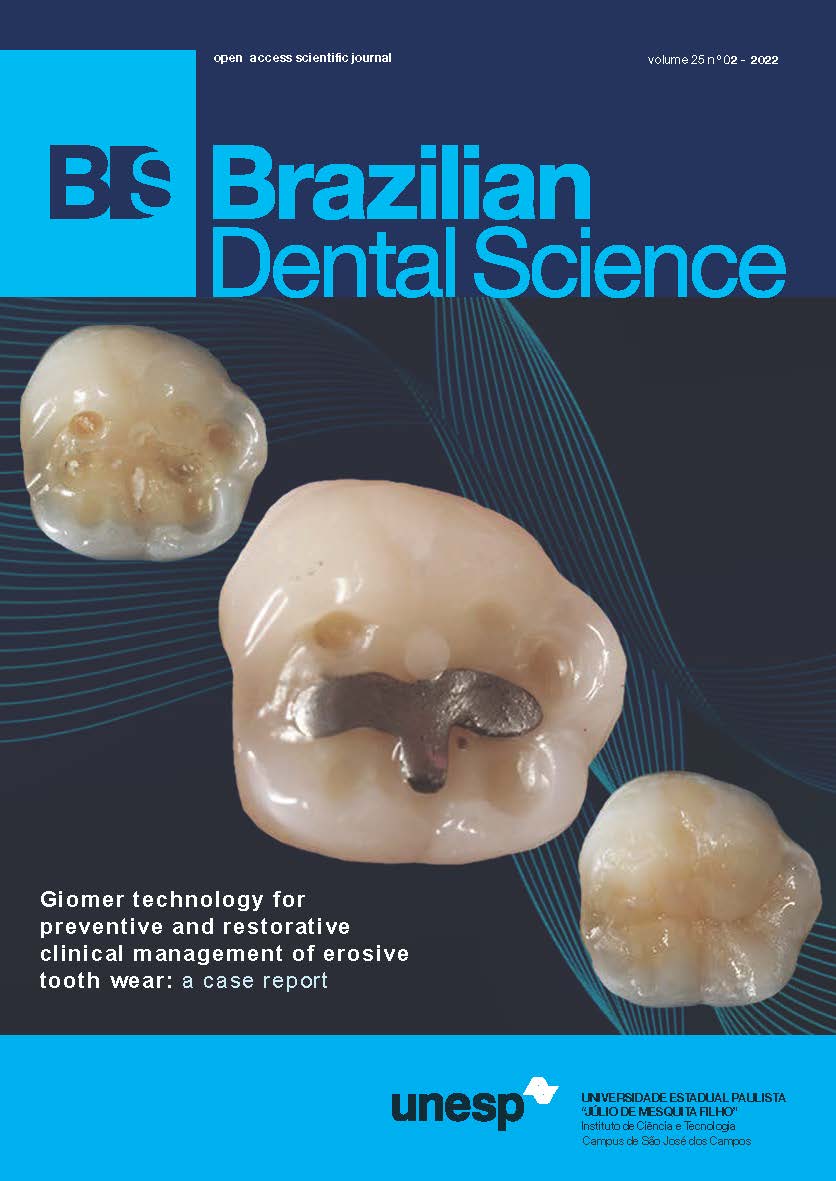The The referral pattern of patients to periodontists by general dentists
DOI:
https://doi.org/10.4322/bds.2022.e2761Abstract
Objective: The successful periodontal therapy needs a proper relationship between general dentist and periodontist.
The aim of this study was to determine the referral pattern of patients to periodontists by general dentists in Yazd,
Iran, by means of a questionnaire. Material and Methods: This descriptive cross-sectional study was carried out in
the form of a survey among 145 licensed general dental practitioners in Yazd, Iran. A questionnaire comprising of
seven questions with sub-questions was prepared. Results: 89% of dentists have referred patient to periodontist.
Gingival recession was the most frequent reason for referring (69.7%) and the least was gingival bleeding (13.1%).
The most frequent surgical procedure for what patients have been referred were peri-implantitis therapy and ridge
augmentation. Referral status to periodontist for female dentists was 95.9% and for male dentists was 81.7%. The
number of referred patients form the dentists who were practicing simultaneously at both private and public clinics
was higher than those who were practicing only at private or public clinics. The most referral percentage was in
the group of dentists with less than 5 years of experience with a slight difference from those with more than 10
years of experience. Only 26.1% of the respondents have participated in retraining programs. Conclusion: There
is a need for general dentists to consider the primary signs of periodontal disease and necessity of referring the
patients in early stages more serious, to provide an optimal long-term outcome for patients.
KEYWORDS
Dentist; Periodontal disease; Referral.
Downloads
Downloads
Published
Versions
- 2022-04-07 (4)
- 2022-03-31 (3)
- 2022-03-31 (2)
- 2022-03-31 (1)
How to Cite
Issue
Section
License
Brazilian Dental Science uses the Creative Commons (CC-BY 4.0) license, thus preserving the integrity of articles in an open access environment. The journal allows the author to retain publishing rights without restrictions.
=================




























